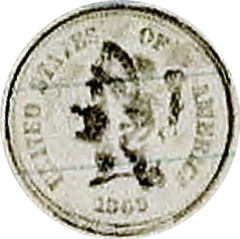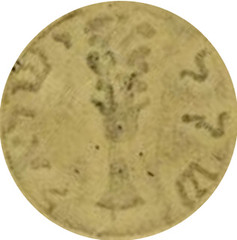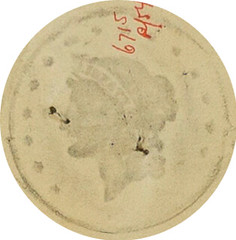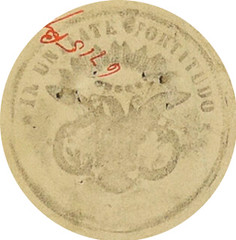
PREV ARTICLE
NEXT ARTICLE
FULL ISSUE
PREV FULL ISSUE
COINS THAT AREN'T WHAT THEY APPEAR TO BENewman Numismatic Portal intern Garrett Ziss provided the following article based on recently added digital content. Thanks! -Editor
Last week’s NNP E-Sylum article highlighted inquiries to the U.S. Mint that included pencil rubbings of Early United States coins. Three additional letters from the National Archives also contain pencil rubbings of numismatic items. Even though they are quite different from each other, they all fall under the category of 

With only a quick look at the obverse, this coin might be mistaken for a three-cent piece. However, its slightly larger size and reverse design help to identify it as the 1869 pattern 5 cent piece (Judd-684). This coin was part of an effort to try to standardize the design of minor coinage in the late 1860’s. The Mint noted in the 1896 correspondence with its owner, J. Barnet of New York City, that this pattern was never issued [for circulation] and that the coin’s numismatic value was about 75 cents. 

In 1894, Thad Burch, from Rich Hill, Missouri, consulted 

According to newspaper reports from the 1860s and early 1870s, the basic design of this numismatic item is similar enough to a Liberty Head double eagle that there were attempts made to pass it off as a gold coin to unsuspecting merchants. It’s clear that this specific object was meant to deceive because the German phrase
Link to letter with pencil rubbing of an 1869 pattern five cent piece:
Link to letter with pencil rubbing of a false shekel:
Link to letter with pencil rubbing of a gaming counter:
To read the earlier E-Sylum article, see:

Wayne Homren, Editor The Numismatic Bibliomania Society is a non-profit organization promoting numismatic literature. See our web site at coinbooks.org. To submit items for publication in The E-Sylum, write to the Editor at this address: whomren@gmail.com To subscribe go to: https://my.binhost.com/lists/listinfo/esylum All Rights Reserved. NBS Home Page Contact the NBS webmaster 
|